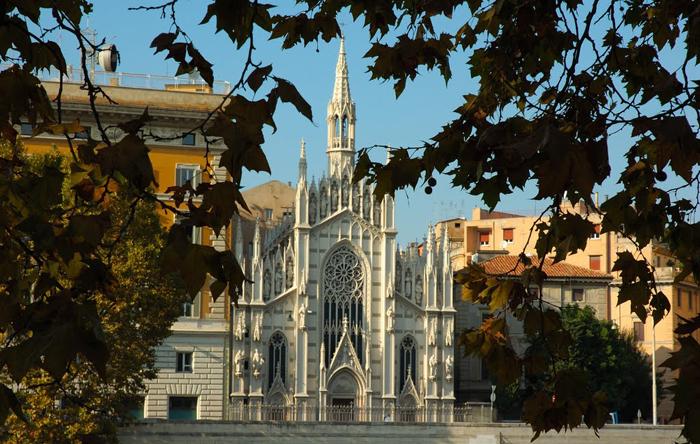Walking around Rome you could be forgiven for thinking that around every corner is a museum. In fact it’s impossible to give an exact figure of how many there are, for sitting alongside the grand museums like Galleria Borghese and Capitoline Museums are smaller independent collections that many visitors never get to see.
Tourists, in their desire to cram into their schedule the guidebook listed ‘must see’ collections, often miss out on the hidden gems. One of these is also possibly one of the most unique and scary of the Eternal City’s ‘hidden museums’.
Situated on Lungotevere Prati is the century old Museo del Purgatorio (Museum of the Holy Souls in Purgatory), located in the rear of the Church of the Sacred Heart of the Suffrage (Chiesa del Sacro Cuore del Suffragio), itself a prime example of Gothic architecture amid the multitude of Renaissance churches.
Just a ten-minute walk from the Vatican, the museum is minuscule in comparison to many larger institutions. In fact, the museum consists of a single display case housed in one small room, but it’s what is inside the display case that sends shivers down the spines of the visitors that discover it, for it holds an assemblage of artefacts said to have been burned by the hands of souls in purgatory.
Museum of the Holy Souls in Purgatory
Although purgatory has no mention in the Bible, its concept has been a part of the Catholic faith since the early 11th century. Teachings dictate that after death a soul is trapped in purgatory until it atones for its sins on earth.
The time spent in purgatory can be reduced by the prayers of those loved ones still alive. The more they pray for the soul, the less time it spends trapped, and it’s the need for these devotions that have led to this collection of items with the charred handprints that are believed to be the result of souls begging for prayers.
The collection was instigated by a French missionary priest, Father Jouet. During a fire that destroyed a portion of the church and a painting of Our Lady of the Rosary, people were said to have seen the face of a man in the flames who was believed to be a trapped soul. Father Jouet saw this as a sign that purgatory existed.
Among the articles on display you can see a book that once belonged to Margherite Demmerlé, a woman who claims her mother-in-law’s handprint appeared as thanks after she had visited asking her daughter-in-law for two masses to be conducted in remembrance.
There’s also a man’s nightcap that it’s said shows his wife’s singed handprints where she begged for him to pray for her soul, as well as a son’s shirt that bears his mother’s prints.
There is also a rectangular piece of wood that bears the sign of the cross alongside a scorched handprint said to have been left by a deceased abbot from the Benedictine Olivetan Order in Mantua, Father Panzini. He is said to have appeared on November 1, 1731 to Mother Isabella Fornari, to whom he explained that he was suffering in purgatory; as evidence of this, he lay his left hand on the table top burning its imprint into the wood. Using a finger, he also burned into the surface the sign of the cross. Mother Fornari also claimed that before he left, he touched her sleeve, leaving a burn that also singed her flesh.
Whether you believe in purgatory or not, it’s worth taking the time to drop into this little church and taking in these unusual and unique exhibits.
Admission to the museum is free, however donations are gratefully accepted. Opening hours coincide with those of the church, daily from 9:00 am to 12:30 pm and from 5:00 pm to 7:00 pm.









